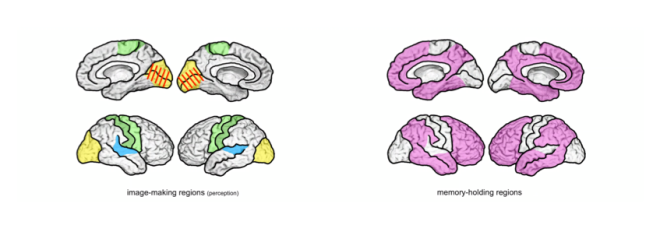In reading ‘Paul Rand: Conversations with Students’ I found a recommendation to read John Dewey’s ‘Art As Experience’, to which Rand went on to proclaim “Well, you art just not an educated designer unless you read this book” (Cited in Kroeger, 2008). Upon reading the first couple of pages I felt that Dewey’s text would be in keeping with the theories I have been procuring during the last few months, there were many instances where Dewey shed a light on several topics that are dominant within my project. At the outset I established a connection with my earlier post on the V&A exhibition ‘disobedient objects’, on the subject of objects attaining meaning beyond their predetermined purpose as a result of a collective discord. The emotional impetus that reconfigured the objects’ meaning came to be obscured when placed in a museum, Dewey equally suggests that “when an art product once attains classic status, it somehow becomes isolated from the human conditions under which it was brought into being and from the human consequences it engenders in actual life-experience” (Dewey, 2005 p. 1).
The act of separating the objects from the social construct from which the altered meaning was conceived lead to the subtexts becoming obscured, hence the curators sought to re-establish the cultural context with a view to coalesce content and form. Dewey recognised that art often became “remitted to a separate realm” and detached from the origin of human experience, for this reason he made an effort to “restore continuity between the refined and intensified forms of experience that are works of art and the everyday events, doings, and sufferings that are universally recognised to constitute experience” (Dewey, 2005 p. 2). One thing I can now be certain of is that the visual message is ultimately abstract and tied to self-contained yet interconnecting mass-psychologies, each social construct an actor within the actor-network, both human and non-human. Take for instance Dewey’s analysis of the Athenian citizens whose shared experience became embodied in the Parthenon, “the people into whose lives it entered had in common, as creators and as those who were satisfied with it, with people in our own homes and on our own streets” (Dewey, 2005 p.3). As a non-human artefact the Parthenon came into being at the hand of human experience and ensuingly delivered further stimuli, conceivably a movement of autopoiesis with reference to the transference of experience.
As the developing growth of an individual from embryo to maturity is the result of interaction of organism with surroundings, so culture is the product not of efforts of men put forth in a void or just upon themselves, but of prolonged and cumulative interaction with environment.
John Dewey | Art As Experience
How is the transmission of experiences possible with the subjective ontology of meaning? The creative act is exclusively defined by each author whose purpose it is to externalise the internal conscious state of man. I consider that experiences cannot be universally shared, perhaps on the surface yet on the inside remains subtlety and nuance, “when a flash of lightning illuminates a dark landscape, there is a momentary recognition of objects. But the recognition is not itself a mere point in time. It is the focal culmination of long, slow processes of maturation” (Dewey, 2005 p.24). Each individual succumbs to a multitude of self-defining experiences, in the end accounting for the pre-existing suppositions we each employ when either creating or interpreting a visual message. This multiplicity is the allure of art, that by delving deeper we may obtain the very consciousness of the creator, but it is also for this reason that art is susceptible to misconception.
DEWEY, J (2005) Art as Experience. New York: Penguin Group. (Original work published 1934)
KROEGER, M (2008) Paul Rand: Conversations with Students. New York: Princeton Architectural Press.

